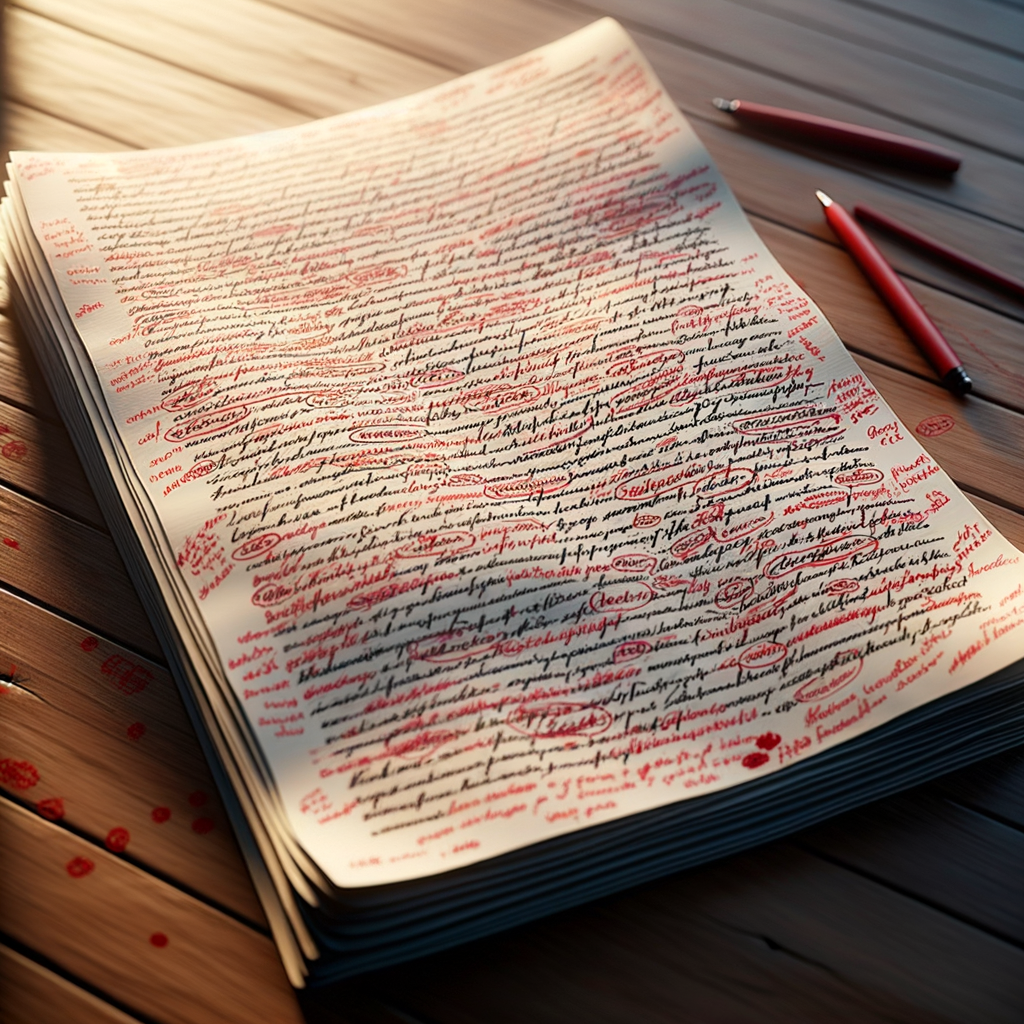The Secret Language of Proofreading: How Freelancers Detect Hidden Errors That Escape the Eye
Uncover advanced proofreading techniques freelancers use to find hidden writing errors and dramatically enhance your work's clarity and professionalism.
The Secret Language of Proofreading: How Freelancers Detect Hidden Errors That Escape the Eye
When you read a passage you’ve written for the tenth time and feel confident it’s flawless, there’s always the nagging suspicion that something has slipped by. As a freelance proofreader, I’ve learned to see writing through a hidden lens, using a subtle “language” of cues, patterns, and mental tricks to uncover errors that routinely escape even the most careful authors. Proofreading isn’t just about spelling and grammar; it’s a refined practice that involves intuition, technique, and an understanding of how language works beneath the surface.
Why Outsiders Miss What Freelancers Find
The first secret to catching hidden mistakes is objectivity. As authors, we’re prone to “reading what we meant” rather than what’s actually on the page—a phenomenon known to linguists as “semantic satiation.” Our brains fill in blanks and correct errors subconsciously. Freelancers, approaching as outsiders, naturally notice awkward phrasings, misplaced modifiers, and inconsistencies. I rely on a technique called “defamiliarization:” reading the text out loud, backward, or changing the font to eliminate visual autopilot. This allows me to notice slips like homophone confusion—think “complement” vs. “compliment”—that are both common and embarrassing in published work.
Professional proofreaders also develop internal checklists based on client requirements and frequent language pitfalls. For instance, I pay special attention to subject-verb agreement in complex sentences and vigilantly look for comma splices and sentence fragments. We’re trained to spot the subtle signals of missing punctuation, errant spaces, or style inconsistencies. These often go undetected by spellcheck or grammar tools, demonstrating just how essential the “human” eye remains in digital times.
Micro-Errors That Tools Can’t Catch
While spellcheckers catch the obvious misspellings, many hidden problems are context-dependent and require a nuanced understanding of language. For example, I watch for misplaced modifiers—phrases that unintentionally distort the meaning of a sentence. Consider the difference in “She almost ate the whole cake” versus “She ate almost the whole cake.” That single shift can change the reader’s understanding. Similarly, subtle shifting tense, misused idioms, and regional spelling variations easily escape automated tools. I read for meaning, not just mechanics, interpreting the intention behind the words to ensure the message is preserved without distraction. This close reading, what I call “listening to the language,” is an art as much as a science.

The Importance of Context and Consistency
Another cornerstone of expert proofreading is awareness of context and consistency. In my practice, I create a style sheet—a living document where I record unique spellings, terminology, formatting quirks, and preferred editorial choices for each client or project. Whether it’s using the Oxford comma, capitalizing certain job titles, or keeping product names consistent, maintaining these standards is crucial for professionalism and trust. Without such a system, errors accumulate subtly, and the text feels uneven to the discerning eye. Proofreading goes far beyond surface correction; it’s about fostering harmony across every sentence.
Detecting Invisible Errors With Linguistic Awareness
Some of the trickiest errors are invisible to both software and casual readers because they lie in the realm of syntax. Ambiguous pronouns, parallel structure mismatches, or subtle wordiness can confuse readers, slowing their comprehension or introducing unintended double meanings. For example, ambiguous “it” or “this” references in back-to-back sentences can make a paragraph feel muddy. I approach each revision pass with a targeted lens: one reading just for pronouns, another for logical flow, and one more for rhythm and clarity. Cross-sentence relationships are often neglected but crucial; ensuring transitions and logical markers are clear can make or break the professionalism of a document.

How Fresh Perspective and Intuition Play a Role
Time and distance are among the most underrated proofreading tools. I make it a point to leave a manuscript alone for at least an hour—sometimes overnight—before attempting a final review. Cognitive science confirms that our brains “reset” after a break, making errors jump out that would otherwise remain camouflaged. Additionally, intuition—built from years of reading, editing, and spotting patterns—alerts me to places where the phrasing “just doesn’t sound right.” Trusting this gut feeling, then seeking out objective rules to confirm or revise, lets me catch the nuanced errors that provide readers with a seamless experience.
Why a Skilled Proofreader Matters for Creators
For creators, writers, and small business owners who want their words to build credibility and rapport with audiences, these advanced proofreading practices offer a competitive edge. Whether you’re preparing blog posts, product descriptions, scripts, or ebooks, the difference between “good enough” and “truly polished” is often in those hard-to-spot errors. An experienced freelancer not only corrects what’s visible but elevates the language, shields against reputation-damaging mistakes, and ensures your message is received exactly as intended. The “secret language” of proofreading is about much more than error correction; it’s about empowering creators to make their voices resonate with professionalism and clarity.
Conclusion
In the end, the most valuable proofreading happens when a skilled freelancer combines linguistic knowledge, technical skills, and a fresh perspective to catch what others miss. Harnessing these insider techniques doesn’t just correct errors—it transforms your content into something that stands out in the crowded creator economy, leaving readers with a lasting impression of excellence.
Blog Article Tags
proofreading editing freelance writing tips linguistics creator economy digital marketing grammar style guide content creatorMore Articles
Maximizing Your Reach: Effective Social Media Strategies for Indie Creators - Discover actionable social media strategies for indie creators to engage fans, grow your audience, and increase support across disciplines.
The Hidden Tactics Hackers Use to Exploit Your Digital Footprint and How to Block Them - Uncover how hackers manipulate your online identity and find actionable strategies to protect your digital footprint and privacy from cyber threats in 2025.
How to Turn Your Unused Garage Into a Profitable Mini Warehouse - Learn how to convert your unused garage into a mini warehouse and rent space to boost your income in 2025. Simple, practical guide for passive earnings.
The Secret Rituals and Superstitions of Top Streamers Revealed - Explore the quirky rituals and superstitions of successful streamers. Learn how these unique habits help boost luck, focus, and audience engagement in streaming culture.
Behind the Curtain: How Streamers Master Their Personalities - Discover the psychological and strategic techniques streamers use to create authentic connections and build loyal communities in a crowded digital world.


